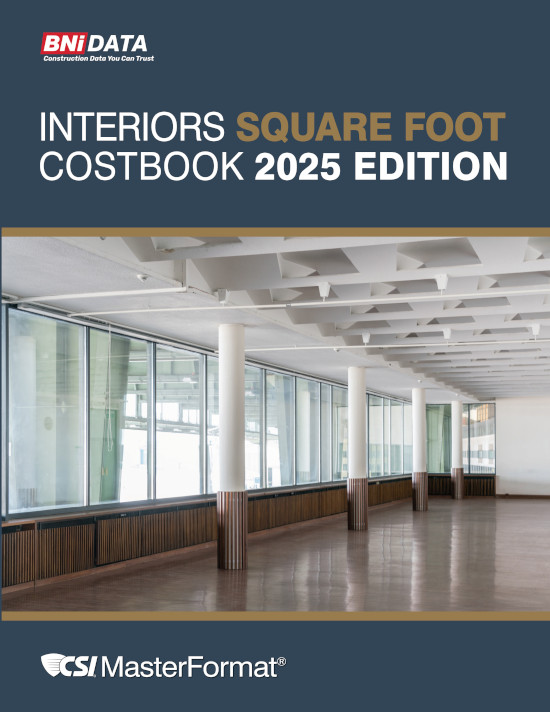Single-family starts should continue on a gradual, upward trajectory in 2020, fueled by solid job growth and low mortgage rates that will keep demand firm, according to economists speaking at the International Builders' Show.
"Low resale inventory, favorable mortgage rates, historically low unemployment and accelerating wage growth are driving builder sentiment and point to single-family production gains in 2020," said NAHB Chief Economist Robert Dietz. "At the same time, builders are still underbuilding as they continue to struggle with rising construction costs stemming from excessive regulations, a chronic shortage of workers and a lack of buildable lots. These affordability headwinds are impeding more robust construction growth."
Indeed, a recent NAHB report examining the last 10 years of home building found that on a population-adjusted basis, single-family construction in the 2010s operated at about half the pace of the uniform decadal rate that prevailed in the 1980s, 1990s and 2000s. This degree of underbuilding and supportive monetary policy conditions indicate that home construction will expand in 2020.
The Forecast
In a sign that the housing market continues to recover, total housing starts are expected to hit 1.3 million units in 2020, up more than 2 percent from last year. While this would mark the highest output since 2007, it is still well below normal production levels that averaged 1.5 million units annually from 1960-2007.
Single-family starts are forecast to increase more than 3 percent from 2019 to about 920,000 units. That's still significantly less than the 1 million to 1.1 million units that demographics would support. Some of this shortfall is being made up by increased use of accessory dwelling units and young adults who live at home.
On the multifamily side, NAHB is expecting multifamily starts to hold relatively steady this year at 383,000 units. This is a sustainable level due to demographics and represents a balance between supply and demand. Currently, 93 percent of all multifamily units are built for rent vs. 7 percent that are constructed for-sale. The historical split is 80-20.
New-home sales are projected to total 708,000 in 2020, up 2.5 percent from last year. This would mark the first year sales would surpass 700,000 since 2007.
Meanwhile, residential remodeling activity is expected to register a 1 percent gain this year over 2019, as existing home sales improve.
South & West Remain Hot Markets
Digging under the national numbers, the South and the West are the regions that will lead new-home growth in the year ahead, according to Frank Nothaft, chief economist at CoreLogic.
"Markets with good affordability, high employment and outdoor amenities have had the highest growth in new-home sales over the last year," said Nothaft.
New-home sales are rising fastest in the South. Dallas and Houston led the way, averaging at least 30,000 new-home sales between Oct. 2018 and Sept. 2019. The two Texas cities were followed by Atlanta, Phoenix and Austin, which all averaged at least 15,000 sales in the same period.
Meanwhile, several metropolitan areas located predominantly in the South posted at least a 20 percent gain in new-home growth over the same 12-month period. Metros leading the way included Port St. Lucie, Fla; Warner Robins, Ga.; Ocala, Fla.; The Villages, Fla, and Sebastian, Fla.
Nothaft added that home prices and rents are expected to continue to outpace inflation in most areas, with nationwide home prices anticipated to rise 4.8 percent in 2020 and single-family rents up 3 percent.
"The housing market is entering the year with a great deal of momentum from 2019," said Nothaft. "This is the first time in post-World War II history that unemployment and mortgage rates are both below 4 percent. That will help fuel demand."
Low Rates and Low Inventories
Looking further at the interest rate environment, David Berson, senior vice president and chief economist at Nationwide Economics, said that rates are expected to remain low for the foreseeable future.
"Trend growth depends on productivity growth and labor growth and productivity has not picked up," said Berson, who noted that GDP growth has averaged just 2 percent since the Great Recession.
At the same time, the nation has experienced a long period of slow labor growth, which slows real economic growth.
Other factors that are keeping interest rates lower for longer include the fact that long-term Treasury yields are still near 100-year lows, helping to hold mortgage rates at historically low levels. At the same time, inflation remains below the Fed's long-term goal of 2 percent.
Meanwhile, existing home inventories remain at all-time low levels but the number of households has been growing strongly. These two factors, helped by solid job gains and low mortgage rates, are fueling housing demand.
"Given the historically low number of homes for sale relative to the number of households, there is only one outlet to meet demand - new home construction," said Berson. "So 2020 should be a good year for new home construction.
For more information, visit nahb.org.




.jpg?height=200&t=1729672015&width=200)



